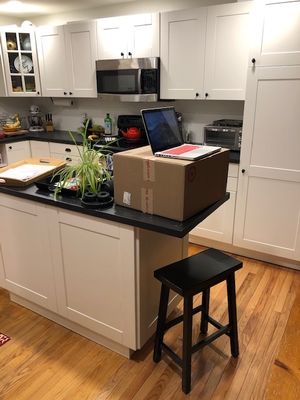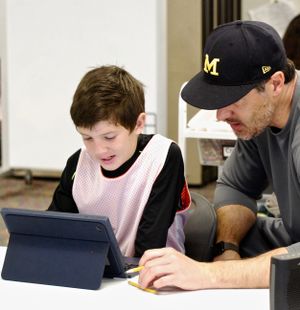From Edutopia
https://www.edutopia.org/article/curbing-teacher-burnout-during-pandemic
https://www.edutopia.org/article/curbing-teacher-burnout-during-pandemic
TEACHER WELLNESS
Curbing Teacher Burnout During the Pandemic
Teachers are adapting to a host of exhausting new challenges during the coronavirus. We asked educators and other experts for strategies to help address this new form of burnout.
By Nora Fleming
May 8, 2020
It’s hard to believe two months have passed since Edutopia contributor Carly Berwick wrote about her school’s sudden closure for the coronavirus—our very first article on the topic. At the time, her district in Bergen County, New Jersey, was ahead of most, but within days, school systems across the country, like toppling dominoes, rapidly followed suit.
In many cases, decisions by districts were so hasty that teachers like Berwick had less than a day’s notice to pack up their belongings and begin figuring out systems to keep kids learning at home. While very stressful, teachers admitted the initial transition came as a bit of a relief—they no longer had to wait for the other shoe to drop. Some teachers even felt like it might be a much-needed, short break from routine.
But as weeks turned to months, remote learning brought new stressors for teachers. Used to working on their feet, educators got a crash course in working at a computer all day, and also struggled with setting up a schedule working from home and managing parent communications. Those challenges have been exacerbated by the atmosphere of uncertainty and the news that most, if not all, schools will remain closed this school year. Many teachers are left wondering how they'll avoiding burning out, especially without the face-to-face interactions with students that keep them passionate about the job.
“I get to know kids in 100 little moments throughout each school day. These little moments are the ones we all are missing—they drive us at work every day through all the chaos,” said Pete Barnes, a fifth-grade science teacher in New Albany, Ohio. "I think we must accept that nothing we do in online learning will be the same as real school, but we have to make every effort to keep going; our students need us."
So what can teachers do to ease this new, pandemic strain of burnout? We talked to educators and mental health experts around the country to gather their insights.
RECLAIM YOUR ROUTINE
Normally driven by an early alarm clock and bells throughout the school day, the new fluidity of remote learning has left many teachers feeling unmoored, we’ve heard.
©Cozine/Shutterstock
A daily, handwritten to-do list can help you stay on track and remember the essentials.
“The school day never ends. Parents now feel like I’m on call 24/7,” summarized one teacher on Instagram, referencing a sense of timelessness that’s led to disorientation in the teacher community. “It’s weird not to have your normal routine,” shared middle school English language arts teacher Stormy Dodge in Kapolei, Hawaii. “It feels like we have no purpose right now.”
Scheduling gurus we talked to strongly recommend reclaiming some form of routine for remote learning.
Start by making a list of everything you have to do at specific time slots (like live teaching online), then schedule things you need to do with more flexible timing (like office hours or grading) and keep them consistent and time-boxed every week, writes Marissa King, a teacher and K-12 professional development consultant in Tulsa, Oklahoma. To save time and create more structure, King advises grouping related tasks together: Instead of sending one email at a time, for example, block off a set time in your schedule to answer all new messages at once.
Because we’re living in a time of unprecedented stress, make sure to build in time to take care of yourself and prioritize what’s essential too. Plan time into your remote learning schedule for breaks, meals, exercise, and sleep, just as you would lesson planning. Setting reminders or alarms on your phone and handwriting out a daily to-do list may help keep you on track.
“At the start of the closure, there was this imperative to work around the clock to provide stability and consistency for students and families. As we move along, that is not sustainable nor is it wise,” said Matthew Howell, a middle school principal in Oceanport, New Jersey. “Now it’s about balancing workflow. Less is more; it is acceptable to slow down.”
CHECK YOUR ERGO
The transition to working from home has not merely involved a location shift for teachers—it’s a completely different way of working.
“Working from home is not what teachers signed up for. It’s a huge challenge because we are not used to sitting at all during the day,” said Heidi Geiges, a middle school computer science, technology, and design teacher in San Carlos, California. That’s resulting in some unanticipated new diagnoses: “I’m experiencing tennis elbow in my left arm from being at the computer,” said Rebecca Conway, a high school biology teacher from Florence, South Carolina.
©John Thomas
To reduce seat time, John Thomas, an elementary school teacher, fashioned a standing desk by placing a box on his kitchen counter.
Some simple modifications may ease the toll on teachers’ bodies. When working at the computer, the screen should be about arm’s length away (25 inches) from your face, recommends the American Academy of Ophthalmology. They also suggest following the 20-20-20 rule to reduce eye strain: Every 20 minutes, look at something 20 feet away for at least 20 seconds. Be aware of the contrast and brightness of your screen too—the screen should not be brighter than the room.
Most importantly, adults need breaks and exercise just like kids, which can help boost mood, improve mental clarity, and relieve stress. Get up and move at least 15 minutes every two hours, doctors advise, even if it’s a walk up and down the stairs. A number of gyms are offering free online classes—no equipment required—during Covid-19.
John Thomas, a first and second-grade teacher in Keene, New Hampshire, has his own novel solution: He’s fashioned a standing desk by placing a box on his kitchen counter, and alternates every 30 minutes between sitting at a desk and standing at the counter to reduce seat time.
TEAM UP WITH PARENTS
Understandably, remote learning has shifted the relationship and intensified communications with parents, our audience of educators says. “The onslaught of emails has definitely increased 10-fold since moving to distance learning,” shared Geiges. “It’s a sinkhole that’s hard to climb out of.”
Geiges and other teachers confided that they can feel obligated to answer parent emails at all hours, but have found it’s important to establish firm boundaries to stay sane. This translates to practices like not checking email on your phone after you close your computer; not syncing your work email to your personal inbox; or setting strict time blocks when you respond.
At times, the relationship with parents can get strained, educators told us, but it can be improved by making sure communications aren’t solely tied to the nitty-gritty of assignments. To warm up a relationship, share positive things a student has done, call home to see how parents are doing, or record a short video or email a note to thank parents for their help, some teachers suggested.
©Nora Fleming
To warm up the relationship with parents, educators recommend streamlining information and thanking them for their help.
When it comes to school work, Barnes recommends streamlining information. “We realized that our fifth graders have little experience with email and were losing the Google Meet invites and getting confused about the schedule. This was driving parents crazy,” said Barnes, whose school now keeps all Google Meet invites at the same times each week, tracked in a single document (with links) that lists all the dates and times, along with assignments.
Quick reminders can also help. Research shows alerting parents in easily accessible formats (like texts) can help boost parent involvement and improve student engagement and performance.
TAP INTO YOUR HAPPY SPACE
Used to being the “sage on the stage,” teachers have told us they’re struggling to manage the instability caused by the pandemic and no longer feel confident they have the answers. Veteran teachers have compared the feeling to being a first-year teacher all over again.
To maintain a level head amid tremendous uncertainty, experts advise keeping focused on what matters most: Reminding yourself you are still a skilled teacher, even if teaching looks different than it used to. To cope, regularly remembering the reasons “why you became a teacher,” or the students’ lives you touched, may ease feelings that you have no control over your life, writes Kelly McGonigal.
Don’t be so hard on yourself, either, says Vicki Davis, a director of instructional technology in Albany, Georgia, who keeps an “Atta Girl” folder of nice notes she’s received over the years, along Pinterest boards of “happy triggers” that lift her spirits during hard times. And Mylien Duong, a senior research scientist at Committee for Children, suggests keeping a gratitude journal (like this electronic one available for educators), which research shows can reduce stress.
When it comes to students, Sherine Aboelezz, a former high school English teacher and now college writing instructor for Georgetown University, uses a similar approach.
“While no one has the answers, I’m starting to feel the best thing I can do is help students manage and cope with their uncomfortable feelings,” said Aboelezz. “Instead of quickly assuring them that things will be over soon, I ask them, ‘What can you do right now that will make this hardship feel a little easier?’”



No comments:
Post a Comment